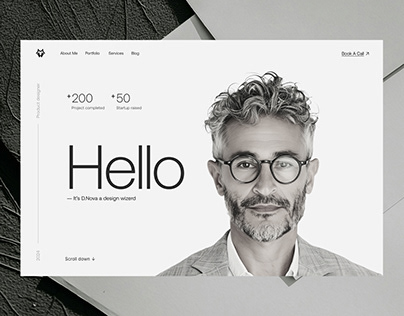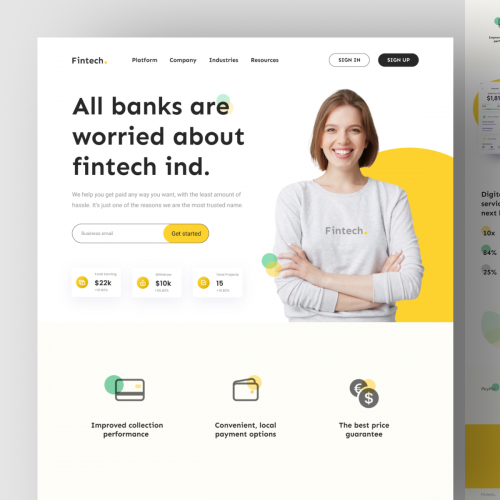Leading Tips for Producing an Impactful Web Site Layout That Converts
To attain this, one have to think about a range of factors, including understanding the target audience, prioritizing user experience, and enhancing for mobile platforms. The strategic usage of compelling call-to-actions and a distinct aesthetic pecking order plays a critical duty in leading customers through their trip.

Understand Your Target Market
Recognizing your target audience is essential to reliable site layout, as it prepares for developing an appealing customer experience. Recognizing who your individuals are, including their demographics, choices, and habits, enables developers to customize the web site's material, design, and functionality to satisfy particular needs.
Performing extensive marketing research is critical in this process. Surveys, meetings, and analytics can supply beneficial insights right into customer assumptions and pain factors. By assembling this data, designers can create user personalities that stand for different segments of the audience, making certain that layout choices are notified and appropriate.
Additionally, comprehending the target audience aids in choosing proper style elements such as color design, typography, and images that reverberate with customers. A site that speaks directly to its target market fosters a feeling of link and trust fund, motivating longer brows through and greater conversion rates.
Eventually, a user-centered approach to website design not only improves user satisfaction yet additionally sustains company purposes by driving interaction and commitment. By focusing on the requirements and choices of the target audience, an internet site can effectively offer its function and achieve desired outcomes.
Prioritize User Experience
To enhance the overall effectiveness of a site, focusing on individual experience (UX) is essential (Website Design). A properly designed UX ensures that site visitors can browse the website easily, locate information swiftly, and engage with material meaningfully. This causes raised individual complete satisfaction and greater conversion rates
Begin by executing intuitive navigation. Menus needs to be rationally structured, enabling individuals to situate vital areas of the site with minimal effort. Consistency in style elements, such as shade systems and typefaces, cultivates familiarity, which is essential for keeping customer interaction.
In addition, consider the packing speed of your site. A delay of just a few seconds can result in considerable drop-offs, as individuals are much less likely to wait on a slow-loading page. Simplifying images and enhancing code can boost performance and maintain site visitors.
Furthermore, clarity in content presentation is crucial. Use concise, appealing language and break up text with visuals to improve readability. By prioritizing individual experience, you not only develop a more pleasurable environment for visitors but likewise reinforce your brand name's credibility. Ultimately, a concentrate on UX is an investment in the long-lasting success of your internet site.
Optimize for Mobile Gadgets
Enhancing for mobile phones is crucial in today's digital landscape, where an see it here increasing variety of individuals gain access to internet sites with smartphones and tablets. A mobile-friendly layout not only improves user experience however likewise plays a substantial function in boosting online search engine positions. To achieve this, it is vital to adopt a receptive style that instantly readjusts to different screen dimensions and alignments.

Loading speed is another crucial variable; mobile customers are generally much less person and expect rapid accessibility to details. By focusing on mobile optimization, you make sure that your website continues to be competitive and efficiently engages a more comprehensive audience.
Usage Compelling Call-to-Actions
A website's effectiveness commonly rests on its capability to direct visitors towards desired actions, making engaging call-to-actions (CTAs) vital components of style. CTAs serve as the essential points that direct users to involve with the website, whether that indicates buying, signing up for an e-newsletter, or downloading and install a resource.
To develop reliable CTAs, quality is vital. Usage concise language that plainly interacts the activity you want the user to take. Expressions such as "Begin," "Subscribe Free," or "Shop Now" not only communicate seriousness but also get rid of ambiguity. The positioning of CTAs is just as crucial; they must be tactically placed throughout the page to ensure they are easily visible, specifically in high-traffic areas.
Furthermore, the layout of CTAs must stand out without being noticeable. Use contrasting colors and clear typefaces to ensure they catch attention. In addition, take into consideration using directional signs, such as arrowheads or images, to guide users toward these switches. By concentrating on these elements, businesses can significantly improve individual involvement, driving conversions and eventually achieving their web site's goals.
Emphasis on Visual Pecking Order
Efficient website official statement layout depends heavily on a well-structured visual pecking order that guides users through material flawlessly. By organizing elements in a manner that prioritizes info, designers can enhance user experience and help with decision-making. This involves making use of dimension, shade, contrast, and spacing tactically to attract focus to the most essential parts of a website.
Using larger typefaces for headings and subheadings develops a clear distinction in between different areas, enabling customers to scan content effortlessly. In addition, employing different shades for buttons and calls-to-action can record individual focus and motivate communication. Whitespace is an additional vital element; it prevents mess and makes it possible for users to focus on crucial messages without directory diversions.
Images and graphics must match the text while likewise sticking to the recognized power structure, strengthening the total message (Website Design). Uniformity in design elements, such as color pattern and typography, more reinforces the aesthetic power structure, making navigation instinctive

Conclusion
Finally, effective web site style requires a detailed understanding of the target audience, prioritization of individual experience, and mobile optimization. The tactical use compelling call-to-actions and a well-defined visual pecking order further enhances customer interaction. By executing these principles, internet sites can accomplish higher conversion prices, ensuring that design elements not only attract site visitors but also assist in smooth navigating and communication. Ultimately, a well-executed site style serves as a vital part in driving individual activities and accomplishing organization goals.